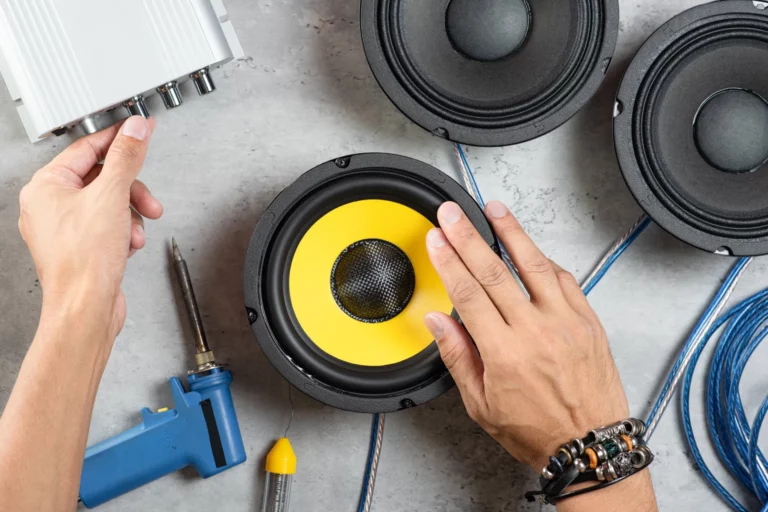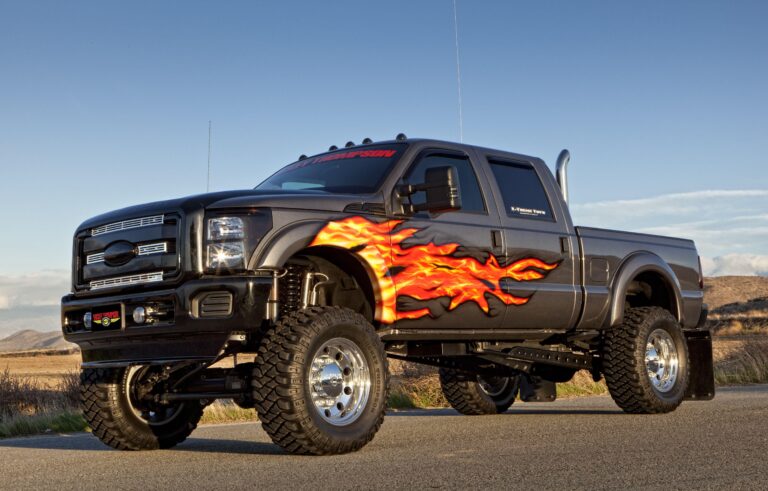Most Reliable Car Brands 2012 List: A Deep Dive into Enduring Quality
Most Reliable Car Brands 2012 List: A Deep Dive into Enduring Quality cars.truckstrend.com
In the ever-evolving automotive landscape, the pursuit of reliability remains a cornerstone for car buyers. While the latest models often grab headlines, understanding the performance of vehicles from past years offers invaluable insight, especially for those navigating the used car market. The "Most Reliable Car Brands 2012 List" isn’t just a historical artifact; it’s a testament to engineering excellence and a practical guide for consumers seeking durable, long-lasting vehicles. This comprehensive article delves into the brands that earned top marks for dependability over a decade ago, exploring the methodologies used to assess them, the factors contributing to their success, and the enduring relevance of these insights for today’s car shoppers.
Understanding Automotive Reliability: 2012 Methodologies
Most Reliable Car Brands 2012 List: A Deep Dive into Enduring Quality
To appreciate the "Most Reliable Car Brands 2012 List," it’s crucial to understand how automotive reliability was measured and reported at the time. Unlike initial quality studies, which focus on problems encountered in the first 90 days of ownership, reliability ratings typically assess the number of problems experienced by owners over a longer period, often three years or more. This long-term perspective provides a more accurate picture of a vehicle’s true dependability.
The primary arbiters of automotive reliability in 2012 were independent organizations like Consumer Reports (CR) and J.D. Power.
-
Consumer Reports: Known for its rigorous, unbiased testing and surveys, CR collects data from its vast member base. Their Annual Car Reliability Survey, a highly anticipated report each fall, gathers information on problems owners have experienced with their vehicles over the past 12 months. This data is then weighted and compiled to create predicted reliability ratings for new models and historical reliability scores for used ones, covering various problem areas from engine and transmission to electronics and body hardware. For the "2012 List," CR’s findings for 2012 model year vehicles and recent prior years were paramount.
-
J.D. Power: A global leader in consumer insights, J.D. Power conducts several key studies. The Vehicle Dependability Study (VDS) is particularly relevant to long-term reliability. The 2012 VDS, for instance, measured problems experienced by original owners of 2009 model year vehicles during the preceding 12 months. While it focused on slightly older models than CR’s immediate 2012 assessment, it provided critical insights into sustained quality over time. Another study, the Initial Quality Study (IQS), measured problems in the first 90 days of ownership for current model years.

Both organizations relied on owner feedback, quantifying problems per 100 vehicles (PP100) as a key metric. A lower PP100 score indicated higher reliability. These comprehensive surveys provided a robust foundation for identifying the most dependable brands of 2012.
The Unveiling: Most Reliable Car Brands of 2012
Based on the consensus from leading reports like Consumer Reports’ 2012 Annual Car Reliability Survey and cross-referenced with J.D. Power’s relevant studies, a clear hierarchy of reliability emerged in 2012. The top spots were predominantly occupied by brands known for their meticulous engineering and conservative approach to design.
Here are the brands that consistently ranked at the top of the "Most Reliable Car Brands 2012 List":
- Lexus: Toyota’s luxury division almost invariably led the pack. Lexus vehicles were lauded for their exceptional build quality, refined powertrains, and remarkably low incidence of reported problems. Their focus on tried-and-true technology and meticulous attention to detail set them apart.
- Toyota: As the parent company of Lexus, Toyota itself was a perennial reliability leader. Known for its robust engines, durable components, and pragmatic engineering, Toyota consistently delivered vehicles that were inexpensive to maintain and rarely broke down. Models like the Camry, Corolla, and Prius were benchmarks for dependability.
- Scion: Toyota’s youth-oriented brand, Scion, benefited directly from its parent company’s engineering prowess. With a simpler lineup and shared components, Scion vehicles like the tC and xB inherited Toyota’s reputation for trouble-free ownership.
- Honda: Another Japanese automotive giant, Honda, consistently ranked among the most reliable. Their engines and transmissions were renowned for their longevity and efficiency. Honda models like the Civic, Accord, and CR-V were popular choices due to their strong reliability track record.
- Acura: Honda’s luxury arm, Acura, mirrored Lexus’s success by translating Honda’s core reliability into premium vehicles. While sometimes incorporating more advanced technology than their Honda counterparts, Acura vehicles maintained a high standard of dependability.
- Mazda: Mazda continued to impress with its strong reliability ratings in 2012. Despite its focus on driving dynamics, Mazda didn’t compromise on quality, with models like the Mazda3 and Mazda6 consistently performing well in reliability surveys.
- Subaru: Subaru earned its place through its reputation for durable all-wheel-drive systems and robust boxer engines. While some models had specific minor quirks, overall, Subaru vehicles like the Forester and Outback were considered very dependable, particularly in challenging climates.
- Buick: A notable American contender, Buick had been steadily improving its reliability ratings for several years by 2012. With a focus on traditional American luxury and a commitment to quality control, Buick models like the LaCrosse and Regal were increasingly competitive in terms of dependability.
These brands distinguished themselves through a combination of engineering philosophy, manufacturing excellence, and a deep understanding of owner expectations.
Behind the Durability: What Made These Brands Shine in 2012?
The consistent top performance of these brands in 2012 was no accident. Several underlying factors contributed to their stellar reliability:
- Proven Technology and Iterative Design: Many of the top-ranking brands, particularly the Japanese ones, adopted a philosophy of continuous improvement rather than revolutionary change. They relied on well-tested, proven platforms, engines, and transmissions, making incremental refinements over generations. This reduced the risk of introducing untested technologies that could lead to widespread issues.
- Rigorous Quality Control: From the sourcing of raw materials to the final assembly line, these manufacturers implemented stringent quality control measures. This included extensive testing of components, automated checks, and highly trained personnel dedicated to identifying and rectifying defects early in the production process.
- Conservative Engineering and Robust Components: The focus was on building vehicles that could withstand years of use and abuse. This meant using high-quality materials, over-engineering critical components where necessary, and designing systems with ample margins for error. For example, Toyota’s powertrains were famously robust, often outliving the rest of the car.
- Strong Supplier Relationships: Top manufacturers cultivated long-term relationships with reliable suppliers, ensuring consistent quality of parts and components that went into their vehicles.
- Effective Feedback Loops: These brands were adept at collecting and analyzing owner feedback, recall data, and warranty claims. This information was then swiftly integrated into their design and manufacturing processes to address issues and prevent future problems.
- Simplicity and Fewer "Gimmicks": In 2012, while infotainment systems were becoming more common, many of the highly reliable models from these brands eschewed overly complex, cutting-edge technology in favor of simpler, more reliable systems. Fewer new features often meant fewer things to go wrong.
Practical Insights for Consumers: Leveraging the 2012 List Today
For those considering a used car today, the "Most Reliable Car Brands 2012 List" offers highly actionable insights:
- Target Your Search: Begin your used car search by prioritizing models from these consistently reliable brands. This significantly increases your chances of finding a vehicle that has been well-engineered and built to last.
- Prioritize Maintenance Records: Even the most reliable car will suffer without proper maintenance. When evaluating a 2012 model, always request complete service records. Look for evidence of regular oil changes, fluid flushes, tire rotations, and timely replacement of wear items (brakes, belts, etc.).
- Pre-Purchase Inspection (PPI) is Non-Negotiable: Before buying any used car, especially one over a decade old, invest in a pre-purchase inspection by an independent, trusted mechanic. They can identify existing problems, assess the condition of major components (engine, transmission, suspension), and check for signs of neglect or hidden damage.
- Understand Common Wear and Tear: Even a highly reliable 2012 model will exhibit signs of age. Be prepared for typical wear items like tires, brakes, suspension components (shocks/struts), and possibly some rubber seals or hoses to need replacement sooner rather than later. These are normal costs of owning an older vehicle, not necessarily signs of poor reliability.
- Check for Recalls: Use the VIN (Vehicle Identification Number) to check for any open recalls on the specific vehicle you’re considering. Recalls are safety-related issues that the manufacturer is obligated to fix free of charge.
- Test Drive Extensively: Pay attention to how the car drives. Listen for unusual noises, feel for vibrations, and test all functions (AC, radio, power windows, etc.). A good test drive can reveal a lot about the car’s current condition.
Challenges and Considerations: Beyond the Rankings
While the 2012 reliability list provides an excellent starting point, a few considerations are essential:
- Model-Specific Variations: While a brand may be highly reliable overall, specific models within its lineup might have had particular quirks or common issues. Researching model-specific forums or owner reviews can provide granular detail.
- Individual Car History: A car’s individual history of maintenance, driving habits, and accident involvement plays a significant role in its longevity, regardless of brand reputation. A poorly maintained car from a reliable brand can be a money pit.
- Technological Complexity: Some 2012 models, particularly those with early iterations of touchscreens, navigation systems, or advanced driver-assistance features, might experience issues with these electronics as they age. Simpler trims often equate to fewer potential points of failure.
- Regional Differences: Climate and road conditions can impact a vehicle’s lifespan. Cars from regions with harsh winters (salt on roads) or extreme heat may show more rust or wear on certain components.
Table: A Snapshot of 2012’s Reliability Leaders
| Brand | General Reliability Standing (2012) | Key Factors for Reliability | Popular Models (2012) | Estimated 2012 MSRP Range (Popular Models) |
|---|---|---|---|---|
| Lexus | Consistently #1 or near the top; exceptional, across-the-board reliability. | Meticulous build quality, refined and proven powertrains, conservative adoption of new tech, strong owner satisfaction. | ES 350, RX 350, IS 250 | $36,000 – $48,000 |
| Toyota | Perennial top-tier performer; benchmark for durability and low ownership costs. | Robust engineering, reliable engines/transmissions, strong quality control, vast parts availability. | Camry, Corolla, Prius, RAV4, Highlander | $16,000 – $35,000 |
| Scion | Excellent reliability due to shared Toyota platforms and components. | Simplicity of design, direct benefit from Toyota’s engineering and manufacturing standards. | tC, xB, iQ | $15,000 – $19,000 |
| Honda | Always a strong contender; known for dependable engines and transmissions. | Innovative yet reliable engine design, solid build quality, good fuel economy, long-term durability. | Civic, Accord, CR-V, Pilot | $16,000 – $32,000 |
| Acura | Very high reliability, benefiting from Honda’s core engineering. | Blend of Honda’s dependability with premium features, robust powertrains, good fit and finish. | TSX, TL, MDX, RDX | $29,000 – $44,000 |
| Mazda | Consistently above average to excellent; often praised for driving dynamics without sacrificing reliability. | Strong engineering fundamentals, well-sorted mechanicals, good attention to detail, efficient powertrains. | Mazda3, Mazda6, CX-7, MX-5 Miata | $16,000 – $28,000 |
| Subaru | Strong reliability, particularly known for its AWD systems and robust components. | Durable Boxer engines, symmetrical all-wheel drive, strong build for varied conditions, loyal owner base. | Forester, Outback, Legacy, Impreza | $21,000 – $32,000 |
| Buick | Significantly improved reliability, becoming a surprising dark horse on the list. | Focus on refined quality, use of proven GM platforms, fewer complex new technologies compared to some competitors, strong warranty support. | LaCrosse, Regal, Enclave | $29,000 – $42,000 |
Note: Estimated 2012 MSRP ranges are approximate for base to mid-trim levels of popular models and can vary significantly based on trim, options, and regional pricing.
Frequently Asked Questions (FAQ)
Q: Are the 2012 most reliable brands still reliable today?
A: Generally, yes. Brands that were reliable in 2012 tend to maintain a strong reputation for reliability in subsequent years. However, specific models and their aging components will vary. The underlying engineering principles often carry forward.
Q: How do luxury brands compare in terms of reliability from 2012?
A: In 2012, Japanese luxury brands like Lexus and Acura consistently outperformed most European luxury brands (e.g., BMW, Mercedes-Benz, Audi) in reliability surveys. While European brands offered performance and prestige, they often had more complex electronics and advanced systems that sometimes led to more reported issues.
Q: Does mileage affect reliability on older cars from 2012?
A: Absolutely. While a car from a reliable brand might be built to last, higher mileage (e.g., over 150,000 miles) increases the likelihood of wear-and-tear items needing replacement, regardless of brand. Low mileage for its age can be a good sign, but also ensure it wasn’t just sitting unused for long periods.
Q: What’s the best way to verify a specific used car’s reliability?
A: Beyond the brand’s reputation, conduct thorough research on the specific model and year you’re considering. Check owner forums, read reviews from that period, get a vehicle history report (CarFax/AutoCheck), and most importantly, get a pre-purchase inspection by a trusted mechanic.
Q: Were any American or European brands on these reliability lists in 2012?
A: While Japanese brands dominated the very top, Buick was a notable American success story, consistently improving and often ranking in the top 10. Ford and Chevrolet also had specific models that performed well, though their overall brand reliability scores might have been lower due to issues with new technologies (like MyFord Touch) or specific drivetrain components in other models. European brands generally lagged behind in comprehensive reliability surveys for 2012, though some specific models from Porsche or Volvo might have shown good dependability.
Conclusion: The Enduring Legacy of 2012’s Reliable Cars
The "Most Reliable Car Brands 2012 List" serves as a powerful reminder that true automotive value often lies in durability and trouble-free ownership. The brands that topped these lists a decade ago—Lexus, Toyota, Honda, Acura, Mazda, Subaru, and Buick—achieved their status through a steadfast commitment to quality control, conservative engineering, and a focus on proven technologies.
For today’s used car buyer, this historical data is more than just an interesting fact; it’s a practical roadmap. By prioritizing models from these dependable brands and combining that knowledge with diligent pre-purchase inspections and a commitment to ongoing maintenance, consumers can still find exceptional value and many years of reliable transportation from vehicles built in 2012. The legacy of these dependable cars continues to deliver peace of mind on the road.





